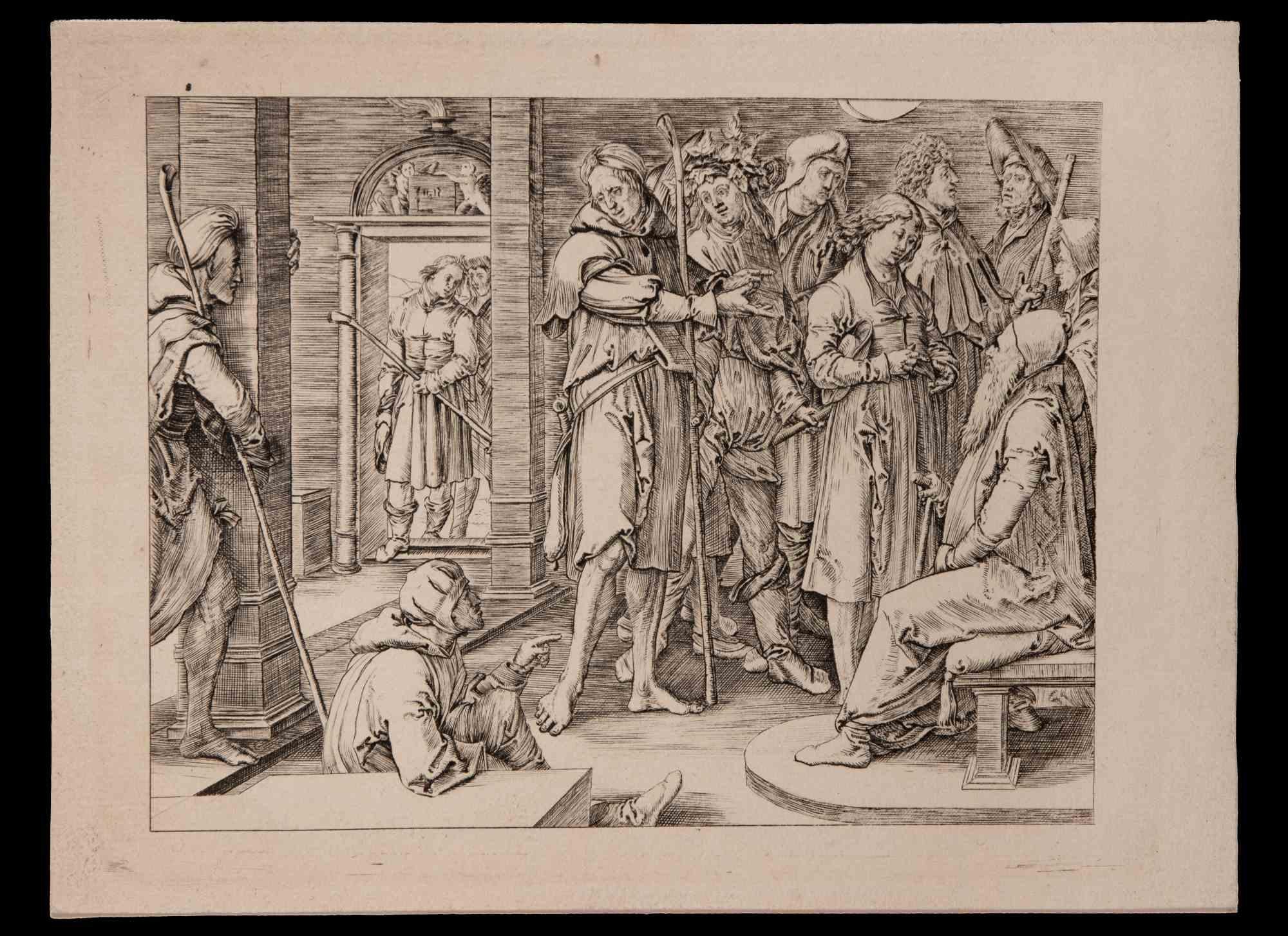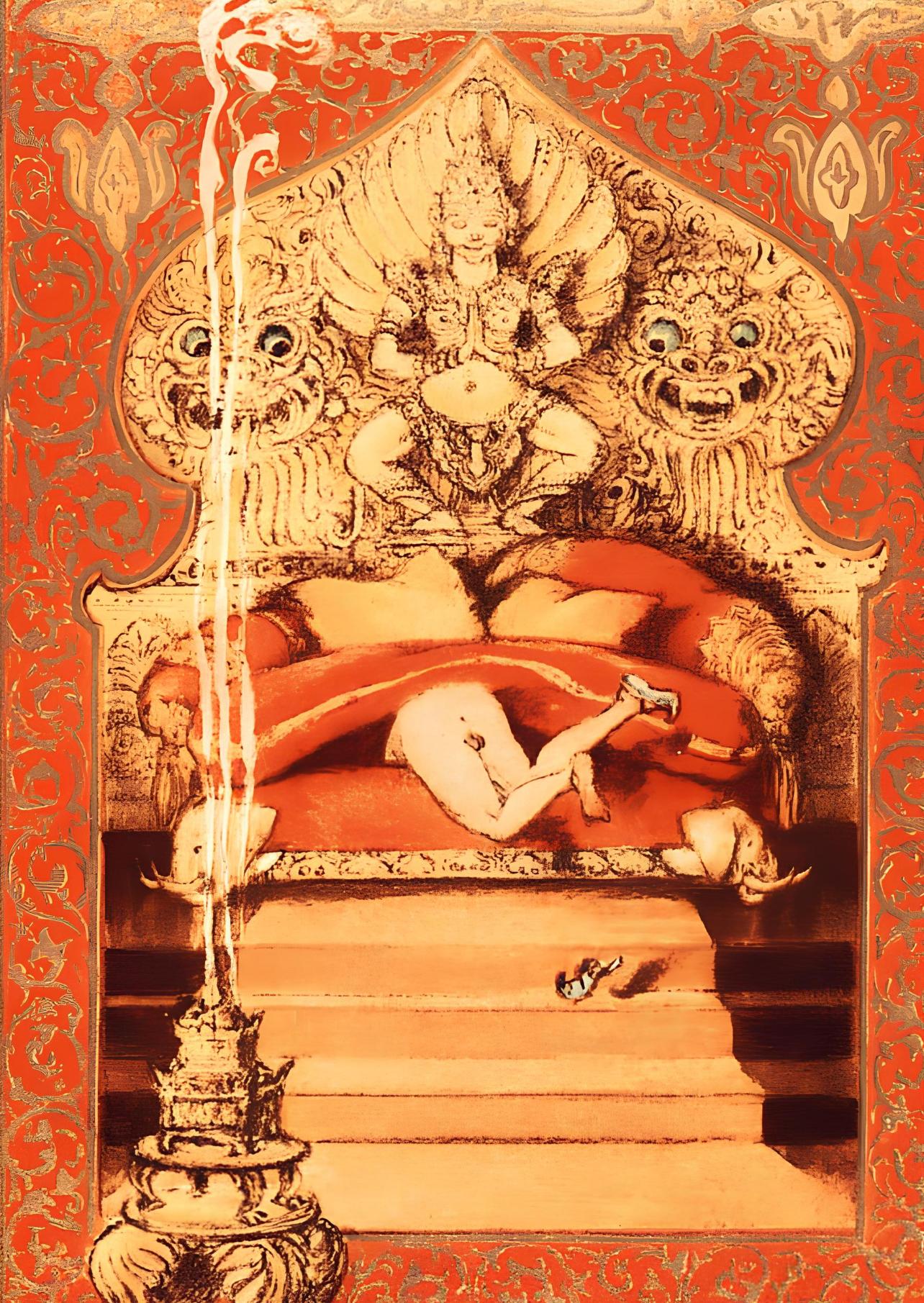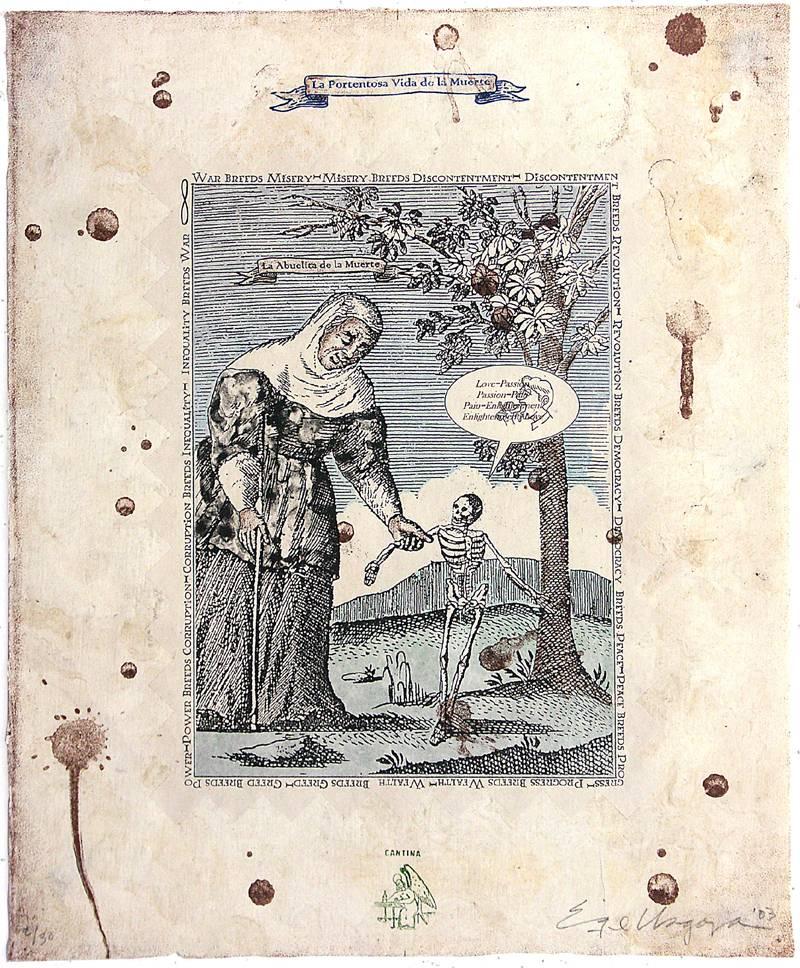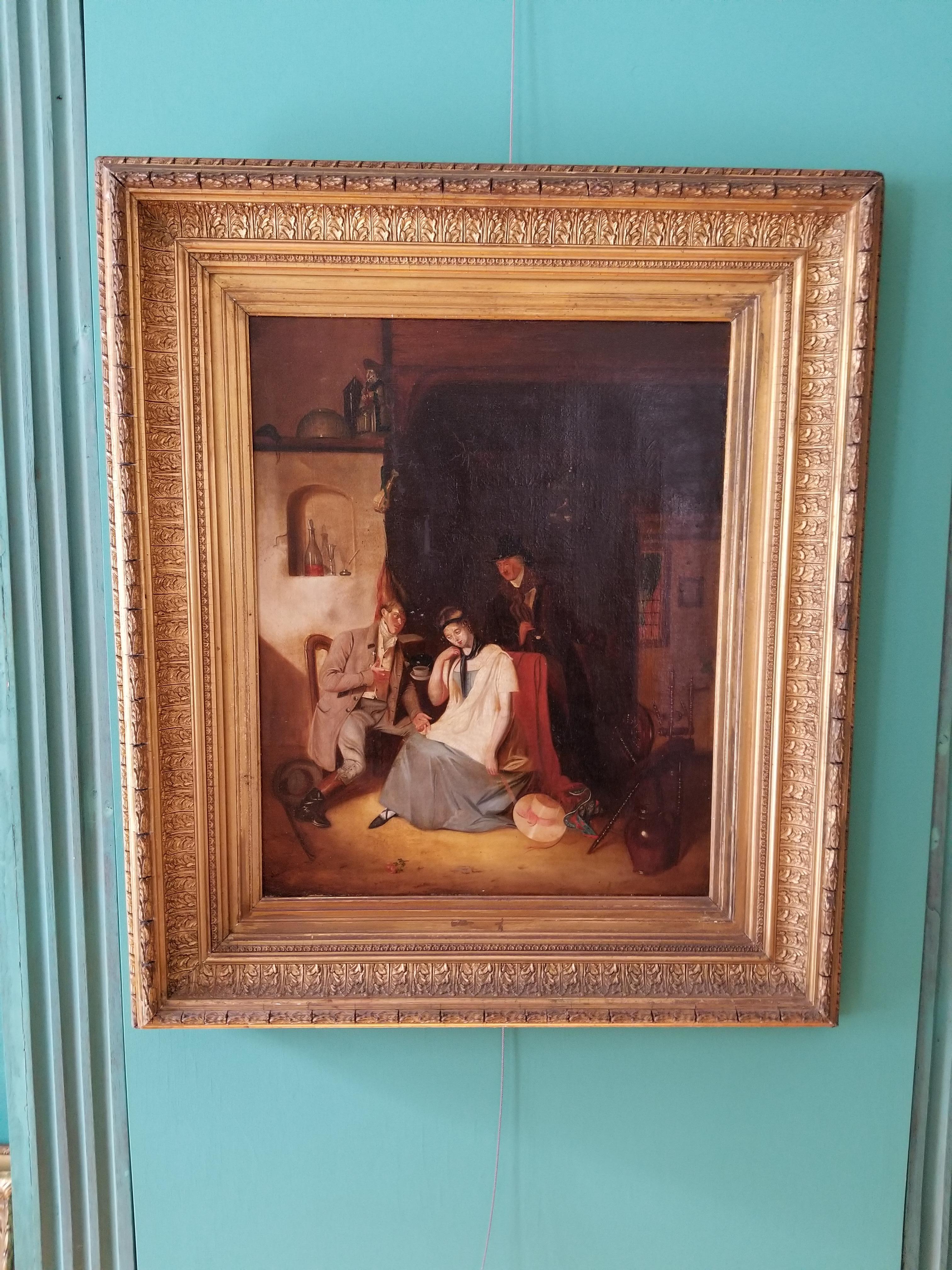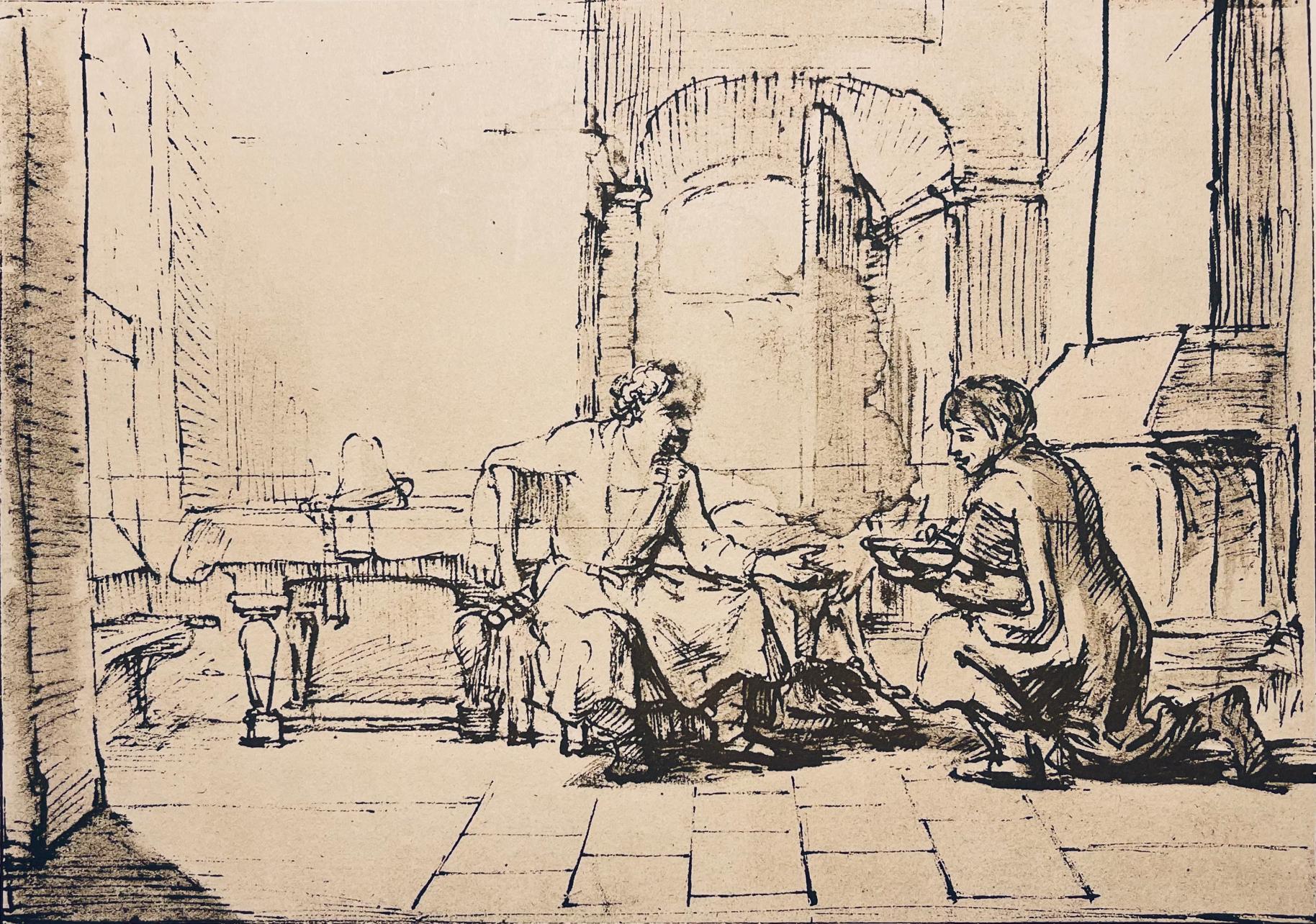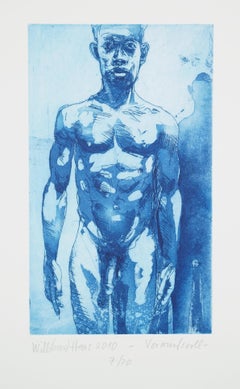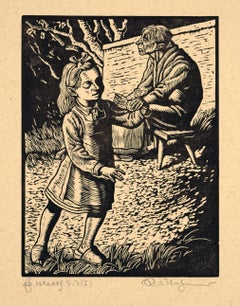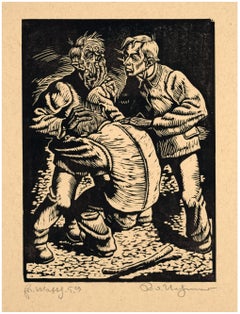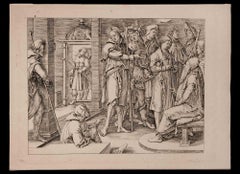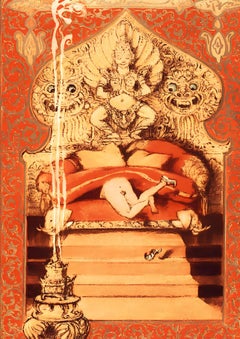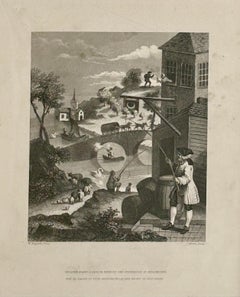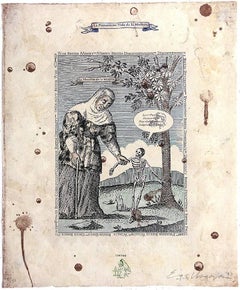Items Similar to Death as a servant / - Concise congeniality -
Want more images or videos?
Request additional images or videos from the seller
1 of 7
Death as a servant / - Concise congeniality -c. 1920
c. 1920
$226.98
$283.7320% Off
£172.96
£216.2020% Off
€192
€24020% Off
CA$317.96
CA$397.4520% Off
A$346.18
A$432.7320% Off
CHF 181.26
CHF 226.5720% Off
MX$4,155.31
MX$5,194.1420% Off
NOK 2,287.55
NOK 2,859.4420% Off
SEK 2,144.97
SEK 2,681.2120% Off
DKK 1,462.46
DKK 1,828.0820% Off
About the Item
Alfred Rethel after (1816 Diepenbenden - 1859 Düsseldorf), Death as a servant, around 1920. Color woodcut by Oskar Bangemann after a drawing by Rethel created around 1845 on handmade paper with watermark “HAHNEMÜHLE”, 30.5 cm x 27 cm (depiction), 42 cm x 36 cm (sheet size), signed “O.[skar] Bangemann SC.[ulpsit]” in the plate lower left and also inscribed “A.[lfred] Rethel” in the plate as a work by Rethel.
- Slight traces of creasing in the lower margin, otherwise in excellent condition with a strong impression.
- Concise congeniality -
Alfred Rethel's drawing, cut into wood by Oskar Bangemann, is in the Dresden Kupferstichkabinett. Even before Rethel struck the artistic nerve of his time with his own series of woodcuts, "Auch ein Totentanz" (1848), he had already explored the theme of the dance of death, studying in particular the graphic Dance of Death by Hans Holbein the Younger and its new edition by Nikolaus Daniel Chodowiecki. The master of the house, torn from life by death, is obviously an aristocratic ruler with a wig and ermine-trimmed coat, while the collapsed man is supported by a bourgeois with a fallen top hat. Death thus also illustrates a socio-political turning point in the context of an Italian Renaissance scene.
Oskar Bangemann, who was head of the woodcut class at the Berlin Museum of Decorative Arts from 1924 to 1942 and taught at the Berlin Academy of Fine Arts, was a master of the woodcut technique. He transformed Rethel's pale pencil drawing into an expressive shade of red. The result is an "all-over" of lines reminiscent of Albrecht Dürer's woodcuts, from which the dramatic scene of sudden death emerges again and again.
About the artist
The talented Alfred Rethel began his studies at the Düsseldorf Art Academy in 1829 at the age of thirteen. His teachers, Heinrich Christoph Kolbe and Wilhelm Schadow, followed a classical Nazarene style, while Carl Friedrich Lessing, who also worked in Düsseldorf, introduced Rethel to history painting, which had a formative influence on him. In 1836 Rethel went to the Städelsche Kunstinstitut in Frankfurt, which was directed by Philipp Veit. In Frankfurt he received the prestigious commission to fresco the Kaisersaal of the Römer with portraits of rulers, and he also won the competition to paint the Coronation Hall of the Aachen City Hall with scenes from the life of Charlemagne.
After creating the illustrations for the "Nibelungenlied" (1840/41) and the watercolor cycle "Der Zug Hannibals über die Alpen" (1842-1844), Rethel traveled to Rome in 1844. There he studied the art of Raphael and associated with the "German Romans". Upon his return, he moved to Dresden and in 1847 began work on the Charlemagne frescoes for the Aachen City Hall. In 1848 Rethel created the woodcut series "Auch ein Totentanz" (Also a Dance of Death), which made him one of the most famous artists of his time. Demand was so great that the series was reprinted in an edition of 10,000 copies, which was unusual for the time.
From 1852 to 1853, Rethel was again in Italy, where his mental state became increasingly cloudy. The resulting illness led to his early death at the age of 43.
GERMAN VERSION
Alfred Rethel nach (1816 Diepenbenden - 1859 Düsseldorf), Der Tod als Diener, um 1920. Farbholzschnitt von Oskar Bangemann nach einer gegen 1845 entstandenen Zeichnung Rethels auf handgeschöpftem Papier mit Wasserzeichen „HAHNEMÜHLE“, 30,5 cm x 27 cm (Darstellung), 42 cm x 36 cm (Blattgröße), unten links mit „O.[skar] Bangemann SC.[ulpsit]“ in der Platte signiert und ebenfalls in der Platte mit „A.[lfred] Rethel“ als Werk Rethels ausgewiesen.
- Leichte Knickspuren im unteren Randbereich, ansonsten in ausgezeichnetem Zustand mit kräftigem Druckbild.
- Prägnante Kongenialität -
Die von Oskar Bangemann in Holz geschnittene Zeichnung Alfred Rethels befindet sich im Dresdener Kupferstichkabinett. Bereits bevor Rethel mit seiner eigenen Holzschnittfolge, „Auch ein Totentanz“ aus dem Jahre 1848, künstlerisch den Nerv der Zeit getroffen hat, hatte er sich mit der Totentanzthematik beschäftigt und insbesondere die druckgraphischen Totentänze von Hans Holbein d. J. und seine Neuauflage durch Nikolaus Daniel Chodowiecki studiert, wobei Rethel dem Sujet stets eine über den „Gleichmacher Tod“ hinausgehende politische Dimension verlieh. So ist der vom Tod aus dem Leben gerissene Herr des Hauses offenbar ein aristokratischer Herrscher mit Perücke und hermelinverbrämtem Mantel, während der Zusammengesunkene von einem bürgerlichen Mann mit hinabgefallenem Zylinder gestützt wird. Mit dem Tod wird also zugleich eine gesellschaftspolitische Wende im Rahmen einer Szenerie der italienischen Renaissance veranschaulicht.
Oskar Bangemann, der die Holzschnittklasse des Kunstgewerbemuseums Berlin leitete und von 1924 bis 1942 an der Berliner Hochschule für Bildende Künste lehrte, beherrschte die Technik des Holzschnitts auf meisterhafte Weise. Er setzt die blasse Bleistiftzeichnung Rethels in einen ausdrucksstaken Rotton um. Dadurch entsteht ein an die Holzschnitte Albrecht Dürers gemahnendes ‚all-over‘ an Lineaturen, aus denen die dramatische Szenerie des unvermittelten Todes immer wieder von Neuem hervorgeht.
zum Künstler
Bereits als Dreizehnjähriger nahm der talentierte Alfred Rethel 1829 das Studium an der Kunstakademie Düsseldorf auf. Seine Lehrer, Heinrich Christoph Kolbe und Wilhelm Schadow, folgten einem klassizistisch ausgerichteten Stil der Nazarener, während der ebenfalls in Düsseldorf tätige Carl Friedrich Lessing Rethel die ihn prägende Historienmalerei nahebrachte. 1836 ging Rethel an das von Philipp Veit geleitete Frankfurter Städelsche Kunstinstitut. In Frankfurt erhielt er den prestigeträchtigen Auftrag, den Kaisersaal des Römers mit Herrscherporträts zu freskieren, zudem gewann er den Wettbewerb für die Ausmalung des Krönungssaals des Aachener Rathauses mit Darstellungen aus dem Leben Karls des Großen.
Nachdem er die Illustrationen des „Nibelungenliedes“ (1840/41) und den Aquarellzyklus „Der Zug Hannibals über die Alpen“ (1842-1844) geschaffen hatte, reiste Rethel 1844 nach Rom. Dort studierte er die Kunst Raffaels und verkehrte im Kreis der „Deutschrömern“. Nach seiner Rückkehr zog er nach Dresden und begann 1847 mit der Ausführung der Karlsfresken für das Aachener Rathaus. 1848 schuf Rethel dann die Holzschnittfolge „Auch ein Totentanz“, die ihn zu einem der bekanntesten Künstler seiner Zeit werden ließ. Die Nachfrage war derart groß, dass ein Nachdruck in der für die damalige Zeit ungewöhnlichen Auflagenhöhe von 10.000 Exemplaren erfolgte.
Von 1852 bis 1853 weilte Rethel abermals in Italien, so sich sein Geisteszustand zusehends eintrübte. Die ausgebrochene Erkrankung führte zu seinem frühen Tod mit gerade einmal 43 Jahren.
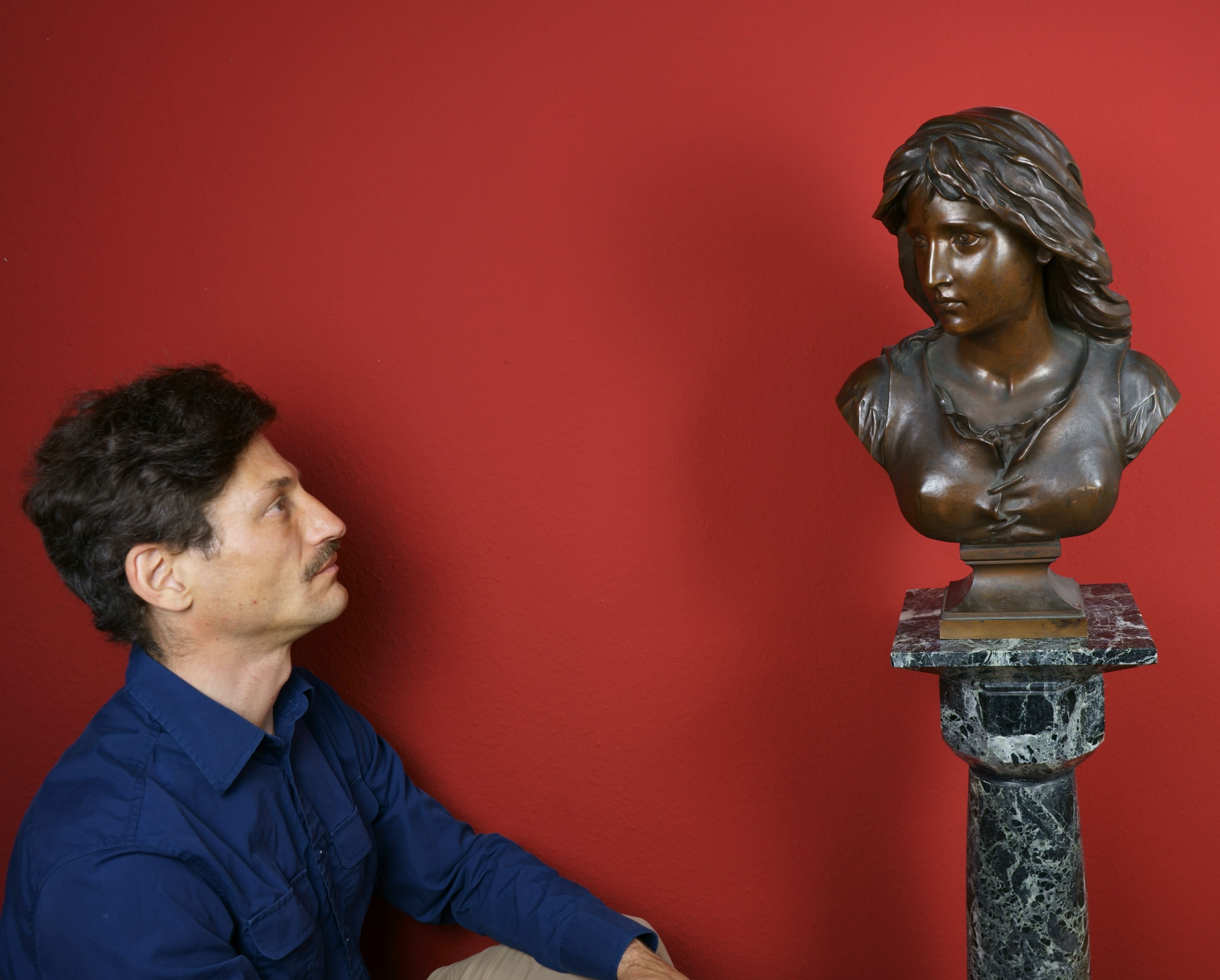
About the Seller
5.0
Vetted Professional Seller
Every seller passes strict standards for authenticity and reliability
Established in 2014
1stDibs seller since 2023
22 sales on 1stDibs
- ShippingRetrieving quote...Shipping from: Berlin, Germany
- Return Policy
More From This Seller
View AllReproachful
Located in Berlin, DE
Willibrord Haas (*1936 Schramberg), Reproachful, 2010. etching, 33.5 cm x 20 cm (plate size), 54 cm x 37.5 cm (sheet size). Signed “Willibrord Haas” in lead by the artist, dated “201...
Category
2010s Realist Nude Prints
Materials
Paper
$274 Sale Price
20% Off
Blessed are the spiritually poor / - The Abundance of Poverty -
Located in Berlin, DE
Rudolf Nehmer (1912 Bobersberg - 1983 Dresden), Blessed are the spiritually poor, 1948. Woodcut on yellowish wove paper, 20 cm x 15 cm (image), 45 cm x 30 cm (sheet size), signed “Ru...
Category
1940s Realist Figurative Prints
Materials
Woodcut
$179 Sale Price
20% Off
Blessed are the peacemakers / - Dehumanization -
Located in Berlin, DE
Rudolf Nehmer (1912 Bobersberg - 1983 Dresden), Blessed are the peacemakers, 1948. Woodcut on yellowish wove paper, 18 cm x 15.5 cm (image), 45 cm x 30 cm (sheet size), signed “Rud.[...
Category
1940s Realist Figurative Prints
Materials
Woodcut
$170 Sale Price
20% Off
The Prophet / - The Burden of the Prophet -
Located in Berlin, DE
Wilhelm Gross (1883 Schlawe - 1974 Oranienburg-Eden), The Prophet, c. 1955. Woodcut on thin laid paper, 43 cm x 23 cm (depiction), 61 cm x 43 cm (sheet size), signed “Dr. Wilh.[elm] Gross” in pencil lower right, inscribed “Orig.[inal] Holzschnitt (Handabdruck)” lower left and inscribed “Aus der ”Ecce homo“ Folge” in the center.
- The wide margin with traces of pressing due to the impression, the sitter's left foot with a small purple stain, otherwise in vibrant condition.
- The Burden of the Prophet -
The large-format woodcut shows a prophet figure that takes up almost the entire height of the sheet. However, instead of seeing something in the distance that is still hidden from our eyes - as is usual in depictions of prophets - the figure has raised his hands in a defensive gesture, as if the prophet is trying to ward off what he has seen. At the same time, however, the position of the arms is an acceptance of the inevitable, which only those who recognize what is to come will have to bear for the time being, which is why the figure in the painting - despite its size - appears almost solitary, alone and exposed to the burden of suffering.
In a manner reminiscent of the folds of medieval wooden sculptures...
Category
1950s Realist Figurative Prints
Materials
Paper
$425 Sale Price
20% Off
Greed / - The Poverty of Wealth -
Located in Berlin, DE
Rudolf Nehmer (1912 Bobersberg - 1983 Dresden), The birds under the sky, 1948. Woodcut on yellowish wove paper, 11 cm x 18 cm (depiction), 43 cm x 30 cm (sheet size), signed “Rud.[ol...
Category
1940s Realist Figurative Prints
Materials
Woodcut
$170 Sale Price
20% Off
Blessed are the merciful / - The support of care -
Located in Berlin, DE
Nehmer, Rudolf (1912-1983), Blessed are the merciful, 1948
Rudolf Nehmer (1912 Bobersberg - 1983 Dresden), Blessed are the merciful, 1948. Woodcut on yellowish wove paper, 18.8 cm x ...
Category
1940s Realist Figurative Prints
Materials
Woodcut
$179 Sale Price
20% Off
You May Also Like
Joseph - Burin Print after Lucas van Leyden - 19th century
By Lucas van Leyden
Located in Roma, IT
Joseph interpret his dream to Jacob is an original artwork realized after Dutch artist Lucas van Leyden (1494 –1533). Later reprint, probably of the e...
Category
19th Century Modern Figurative Prints
Materials
Engraving
Icart, Composition, Le Sopha (after)
By Louis Icart
Located in Southampton, NY
La pointe sèche etching on vélin de Rives filigrané à notre nom paper. Paper size: 9.5 x 7.5 inches; image size: 6.5 x 4.5 inches. Inscription: unsigned and unnumbered, as issued. No...
Category
1930s Modern Figurative Prints
Materials
Etching, Drypoint
Whoever Makes A Design Without the knowledge of Perspective
By William Hogarth
Located in Bournemouth, Dorset
William Hogarth was an English painter and engraver, the outstanding British artist of his period. During his childhood, his father, a schoolteacher, was imprisoned for debt, and th...
Category
1830s Figurative Prints
Materials
Engraving
$182 Sale Price
20% Off
La Portentosa Vida de la Muerte
By Enrique Chagoya
Located in Lyons, CO
Color lithograph with chine collé, Edition 30.
Enrique Chagoya makes paintings and prints about the changing nature of culture. “My artwork is a conceptual fusion of opposite cul...
Category
21st Century and Contemporary Contemporary More Prints
Materials
Lithograph
The Question to be Answered
Located in Saratoga Springs, NY
A beautiful 19th Century Northern European School genre, as a young gentleman poses a question to the young lady, as the father looks on. All is original and with the period frame. A...
Category
Late 19th Century Realist Interior Paintings
Materials
Canvas, Oil
Rembrandt, Composition, Rembrandt, Drawings from the Bible (after)
By Rembrandt van Rijn
Located in Fairfield, CT
Medium: Lithograph on vélin Hamilton Kilmory paper
Year: 1947
Paper Size: 9.5 x 12.5 inches
Inscription: Unsigned and unnumbered, as issued
Notes: From the folio, Rembrandt, Drawings...
Category
1940s Baroque Figurative Prints
Materials
Lithograph
$716 Sale Price
20% Off
More Ways To Browse
Antique Death
Caroline Durieux On Sale
Chagall Arabian Nights
Chagall In The Land Of Gods
Chagall Maternity
Chagall Paysage
Chagall Romeo
Chagall Ruth Gleaning
Chagall Signed Poster
Christ And The Rembrandt
Christian Silvain
Clemens Briels On Sale
Collier Picasso
Corneille Bleu
Cristina Martinez
Dali Alice In Wonderland
Dali Aliyah
Dali Apollinaire
